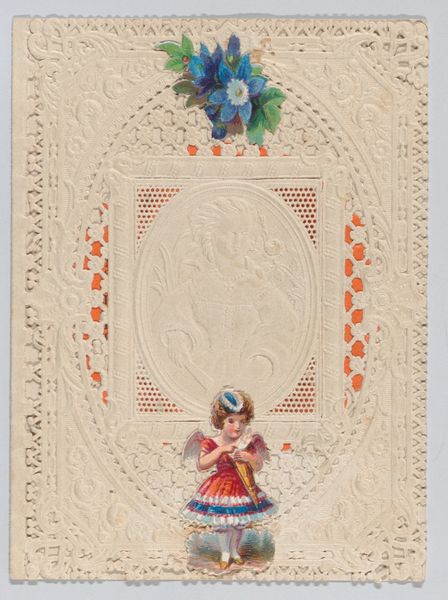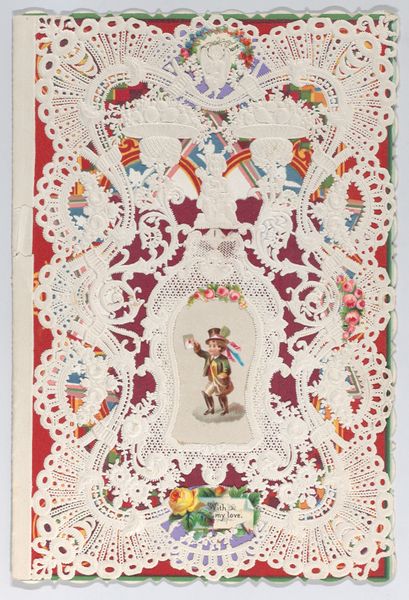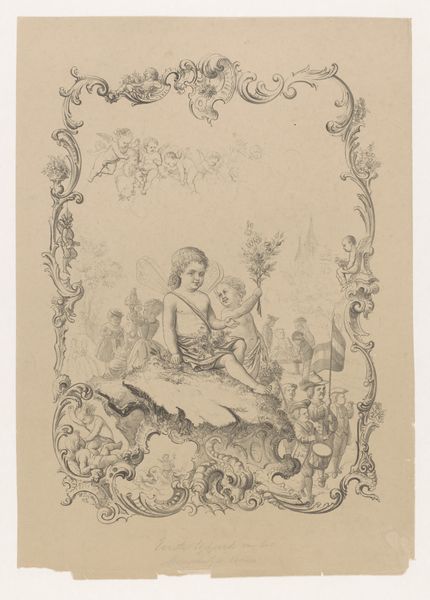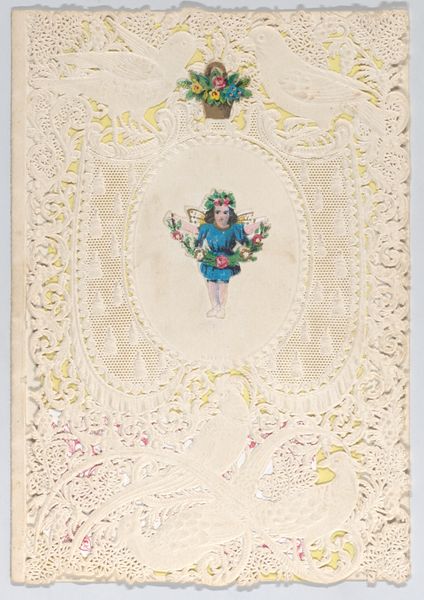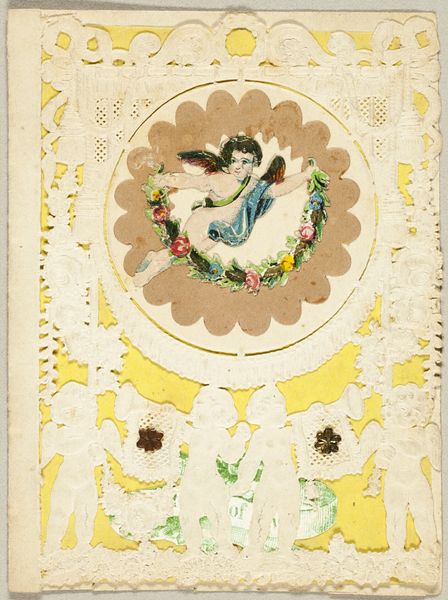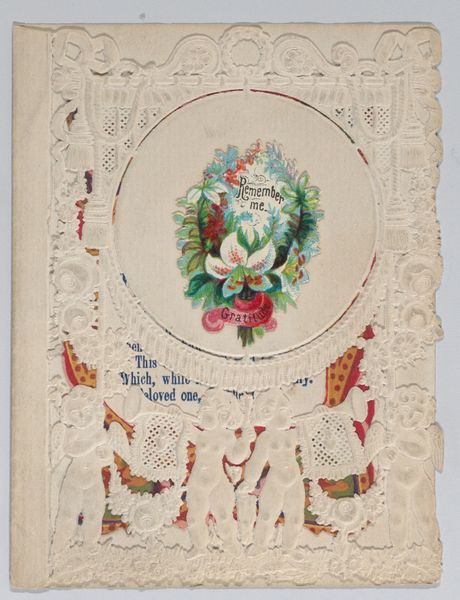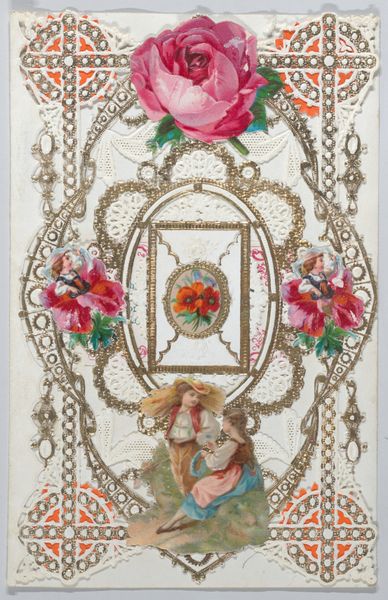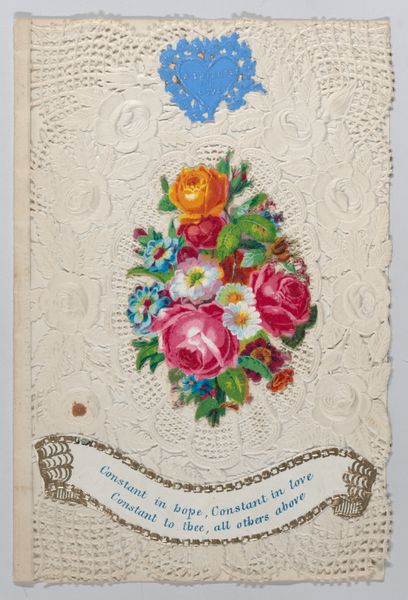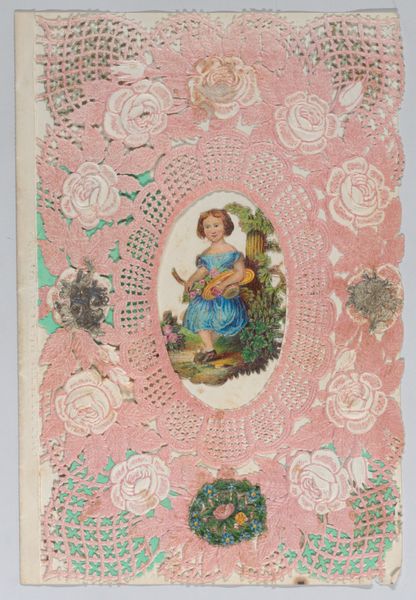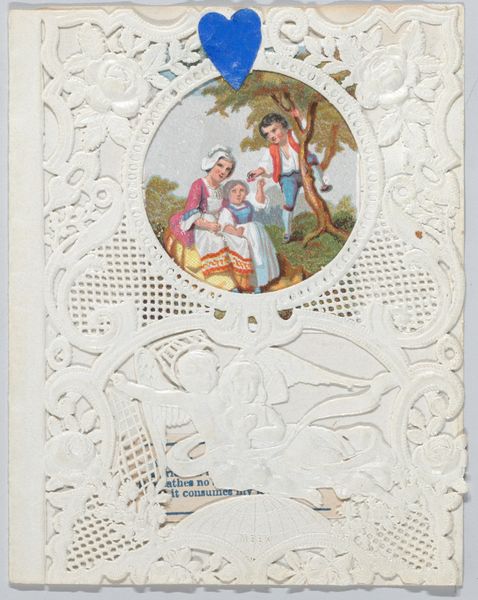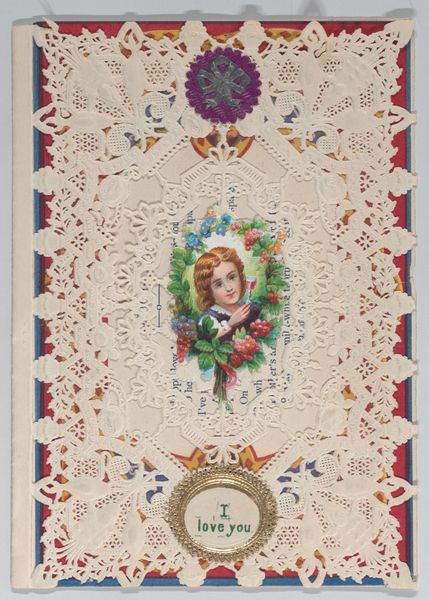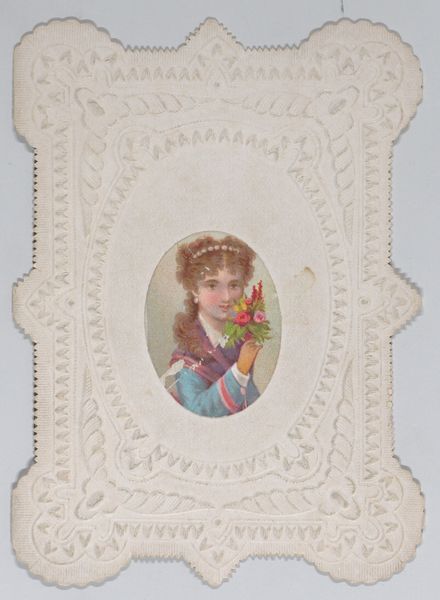
Dimensions: Width: 3 7/16 in. (8.7 cm) Length: 4 5/8 in. (11.7 cm)
Copyright: Public Domain
Editor: This print, called "Valentine," is from sometime between 1850 and 1860. It's an anonymous work, featuring colored pencil and drawing. What strikes me is the central image of the girl guiding a smaller child, nestled within that very ornate, almost overwhelming lace design. How do you read all those symbolic elements together? Curator: Well, the heart of the matter, of course, resides in deciphering what lace *means*. Think of the Victorian era – lace isn’t merely decoration; it speaks of status, delicacy, refinement. Now, what happens when you set this stage for a vision of domestic innocence? Editor: So the lace almost frames the figures, elevating their purity? Curator: Precisely. The miniature size also adds a layer. Miniatures were often keepsakes, intensely personal. This small token then, combining refinement and childhood innocence, functions as a sentimental wish for a pure and happy future— "May you live happy." What emotional tone do *you* perceive from the girl's posture as she guides the child? Editor: It feels protective, like a miniature Madonna figure almost. It's not just decorative, it's an emblem of caring. Curator: A powerful observation! Considering it was intended for circulation and exchange, how much was individual versus cultural sentiment baked in? We see romanticism’s focus on emotion channeled into established symbols of beauty, care, and future happiness. Editor: That blending of public symbols and private feelings makes the piece feel so representative of its time. Thanks for sharing your insights! Curator: Indeed! Each small detail unlocks volumes when you learn how to look beyond its surface.
Comments
No comments
Be the first to comment and join the conversation on the ultimate creative platform.
